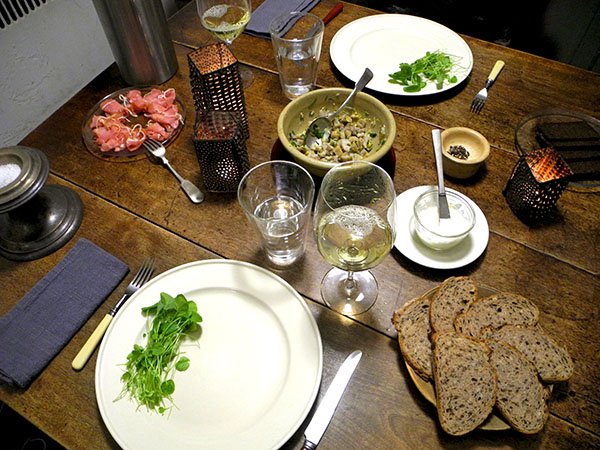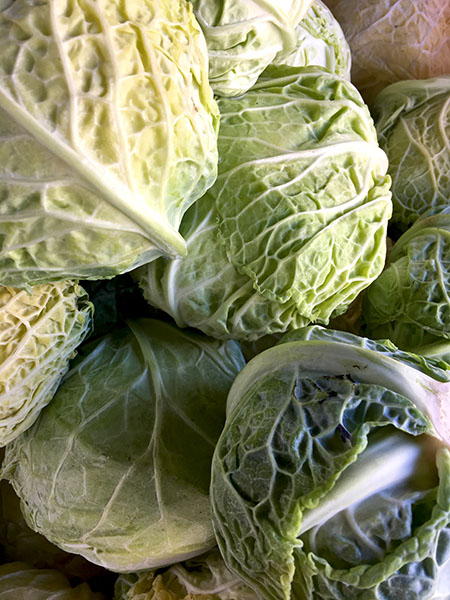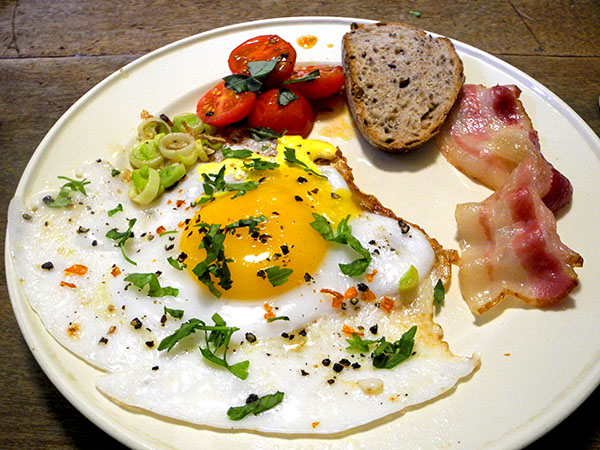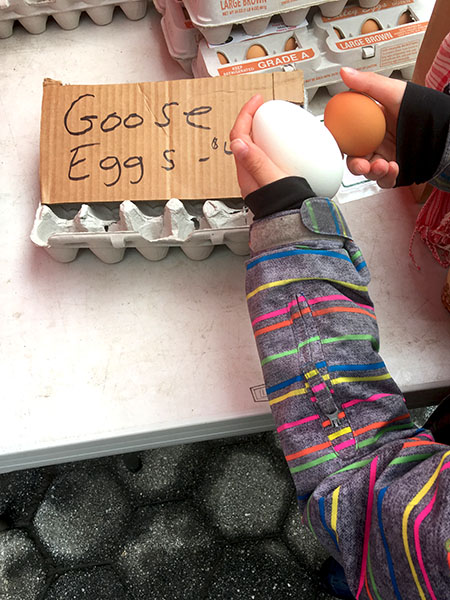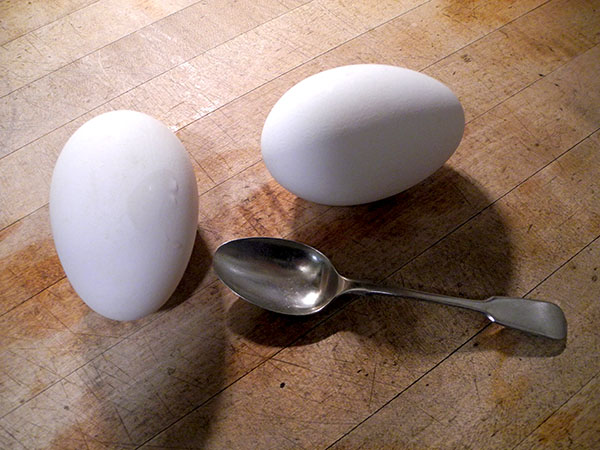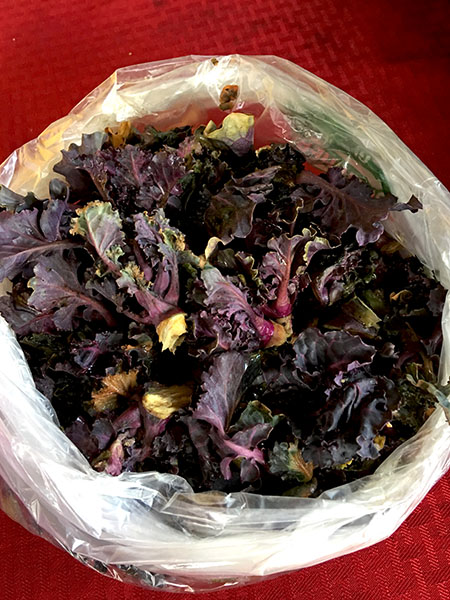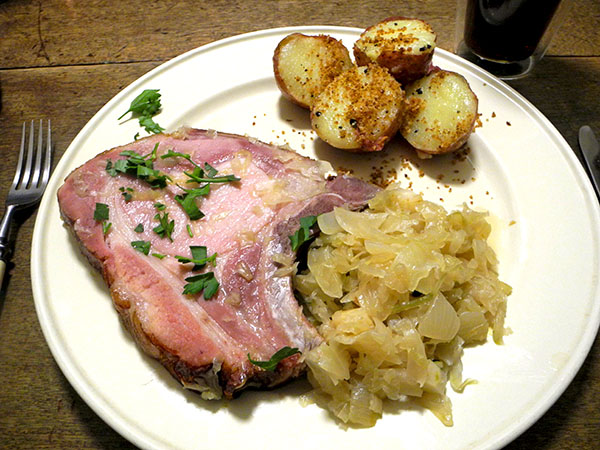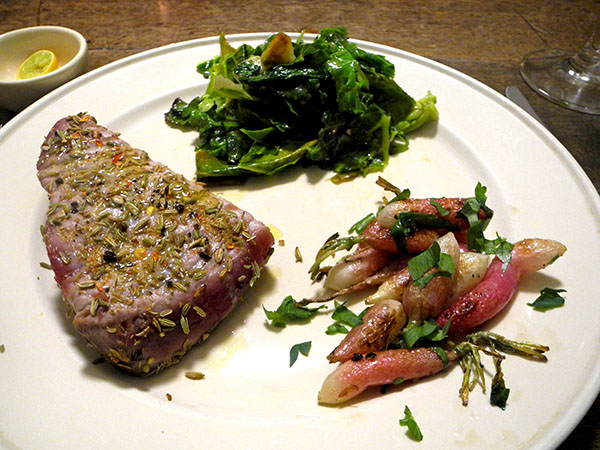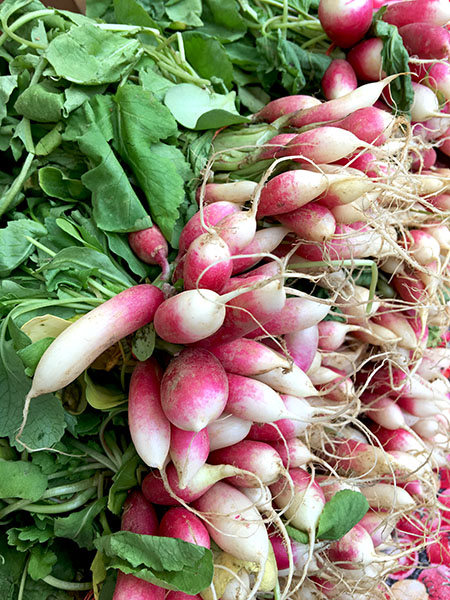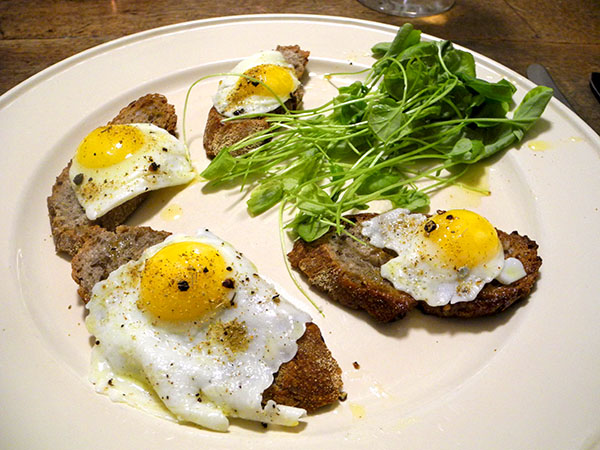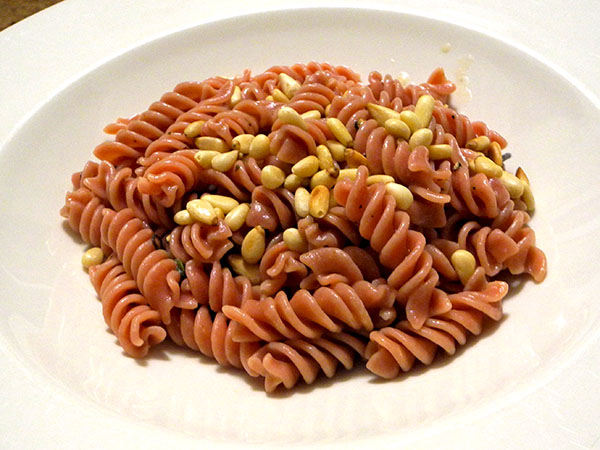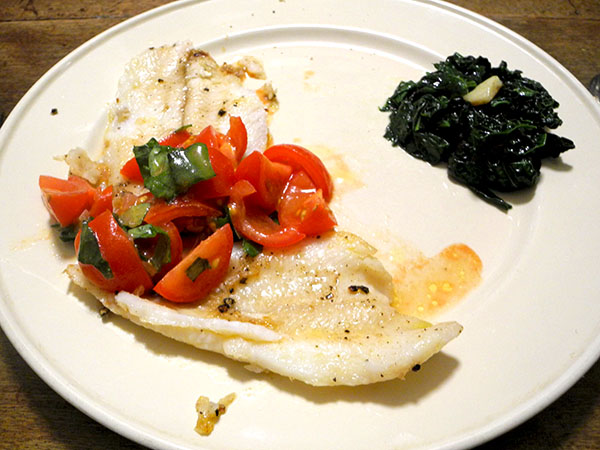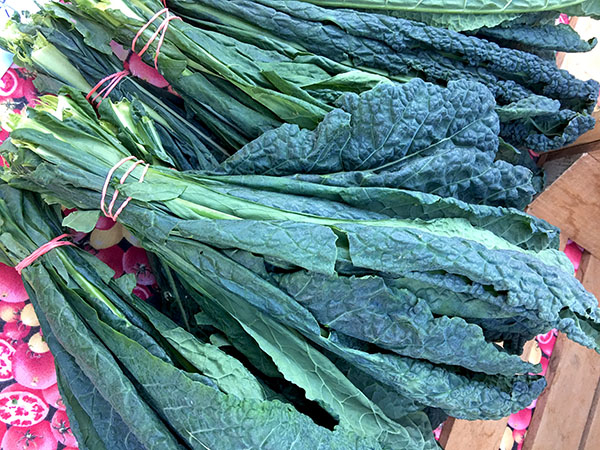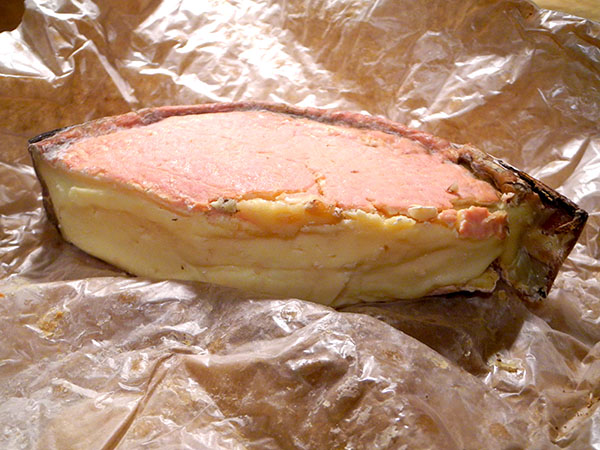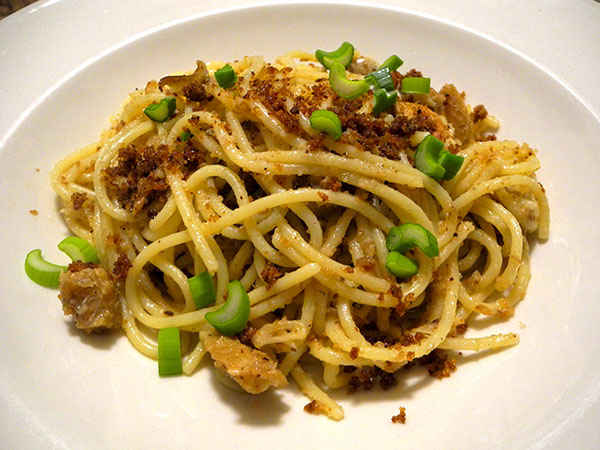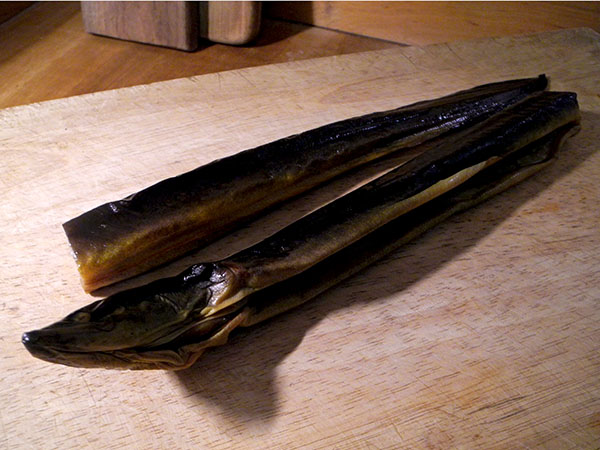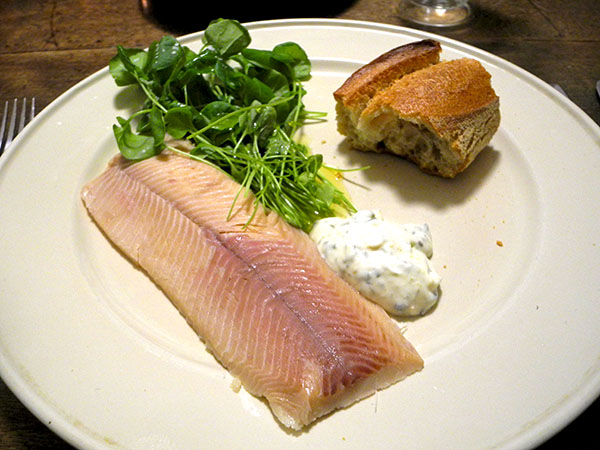
It was Saint Valentine’s day, so the dinner had to be a little special, and it wouldn’t hurt if it were also a little red-ish (as it turned out, through all 3 courses – and the wine as well).
- seven ounces of Solex Catsmo (Wallkill, Orange County, NY) smoked rainbow trout from Eataly, arranged on the plates with Ronnybrook Farm Dairy crème fraîche mixed with lemon zest, lemon juice, fresh chives from Two Guys from Woodbridge, and dried Sicilian dill from Buon Italia (at least I think that’s the description and the source), accompanied by fresh upland cress, also from Two Guys from Woodbridge, drizzled with a good Campania olive oil (Campania D.O.P. Penisola Sorrentina ‘Syrenum’)
- a crispy ‘Baguette Monge‘ from Eric Kayser, which we tore with our hands, as usual
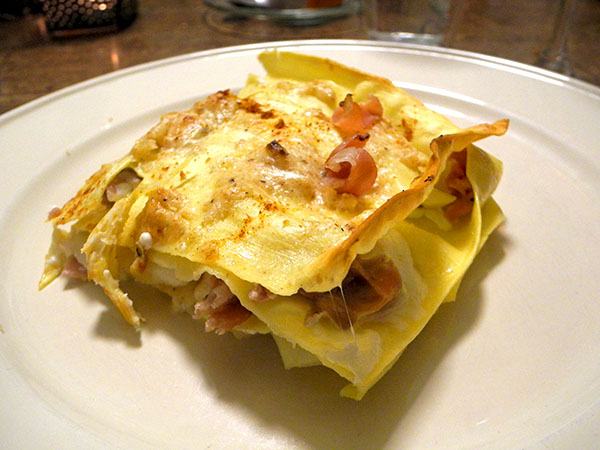
-
eight ounces of fresh lasagna sheets from Luca Donofrio‘s fresh pasta shop inside Eataly, cooked for 3 minutes only inside a large pot of lightly-salted water, the sheets removed and either placed in a large bowl of cold water until needed, at which time they would be drained and dried, or else place on one or more layers of clean towels or parchment paper arranged on a baking sheet (or 2 baking sheets, of necessary), an 8″ x 12″ glazed ceramic baking dish buttered evenly on the bottom and sides, a little of a Bechamel [It. Besciamella] sauce (not too thick) prepared earlier and seasoned with salt, black pepper, and Nigerian cayenne pepper spooned evenly on the bottom, a layer of pasta arranged on top of that, touching all of the sides of the pan, more of the sauce, then, in layers, a portion of 4 ounces of diced local Lioni Latticini mozzarella, from Whole Foods; a portion of 4 ounces of an absolutely delicious Recla Speck Alto Adige IGP, from Bolzano, purchased at Eataly, cut into matchstick pieces; 2 peeled, quartered, cored and thinly-sliced Rushing River Stemilt Red D’Anjou pears from Eataly; then more of the sauce, continuing in the same order until all the ingredients were used up, ending with a layer of pasta, and the last of the Bechamel on top of it, the pan cover with aluminum foil and placed in the oven for about 15 minutes, the foil then removed, the oven turned up a little after a very few more minutes, to make the edges of the pasta crisp, the lasagna removed from the oven when the aromas had become obvious for a couple of minutes, then let rest for 3 or 4 minutes
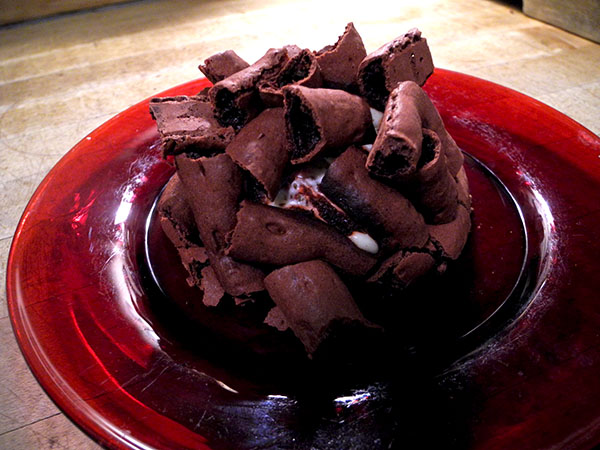
- a Red Concord cake for 2 (sort of a chocolate dacquoise, with, I think, a mousse, meringue, and a gooey strawberry filling as well) from Breads Bakery on East 16th Street [the picture shows the portion we shared]
- the wine throughout was a special pink French (Champagne) sparkling rosé, A Margaine Champagne Brut Rosé
- the music throughout was a brilliant valentine, Mozart’ ‘Le Nozze Di Figaro’, René Jacobs conducting the Concerto Cologne and the Cologne Collegium Vocale
